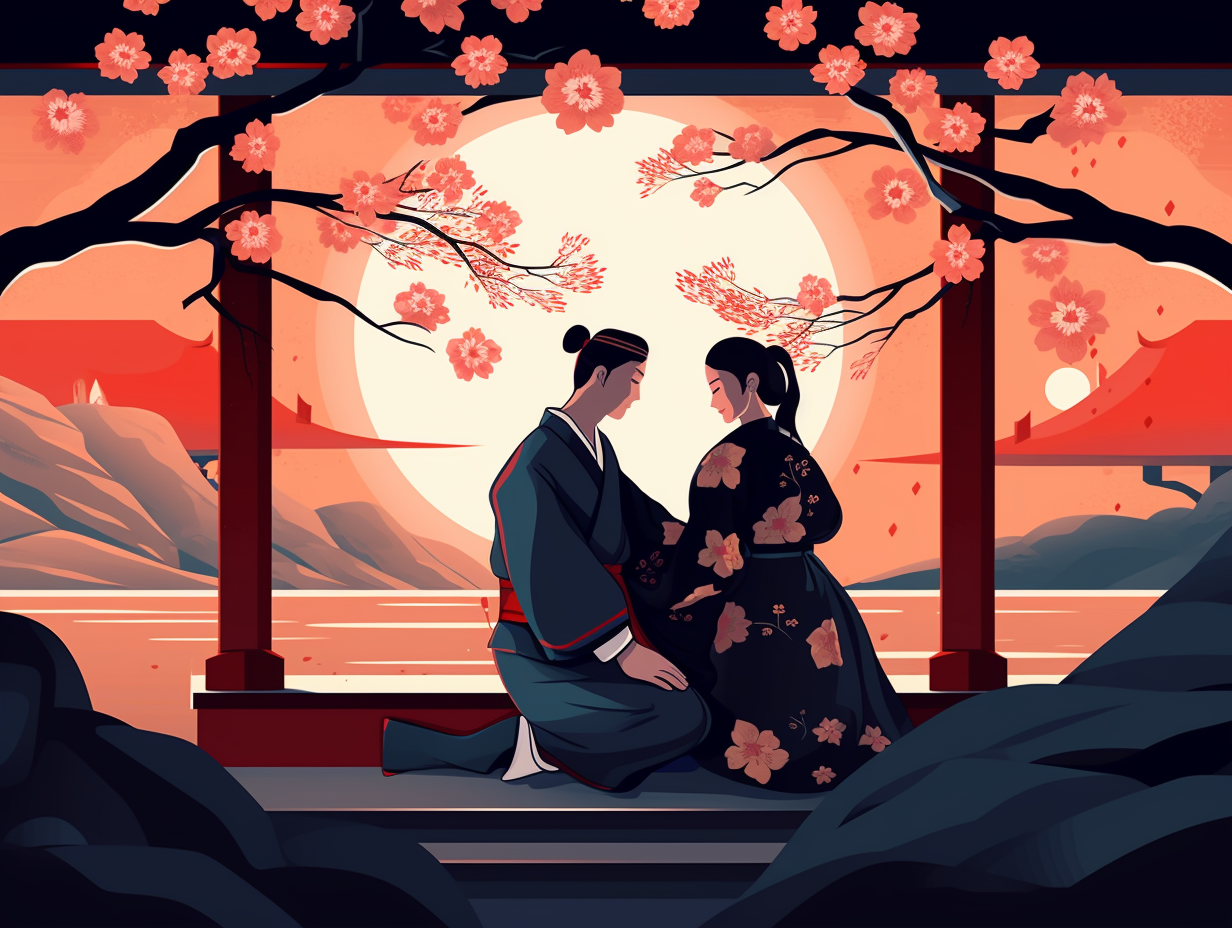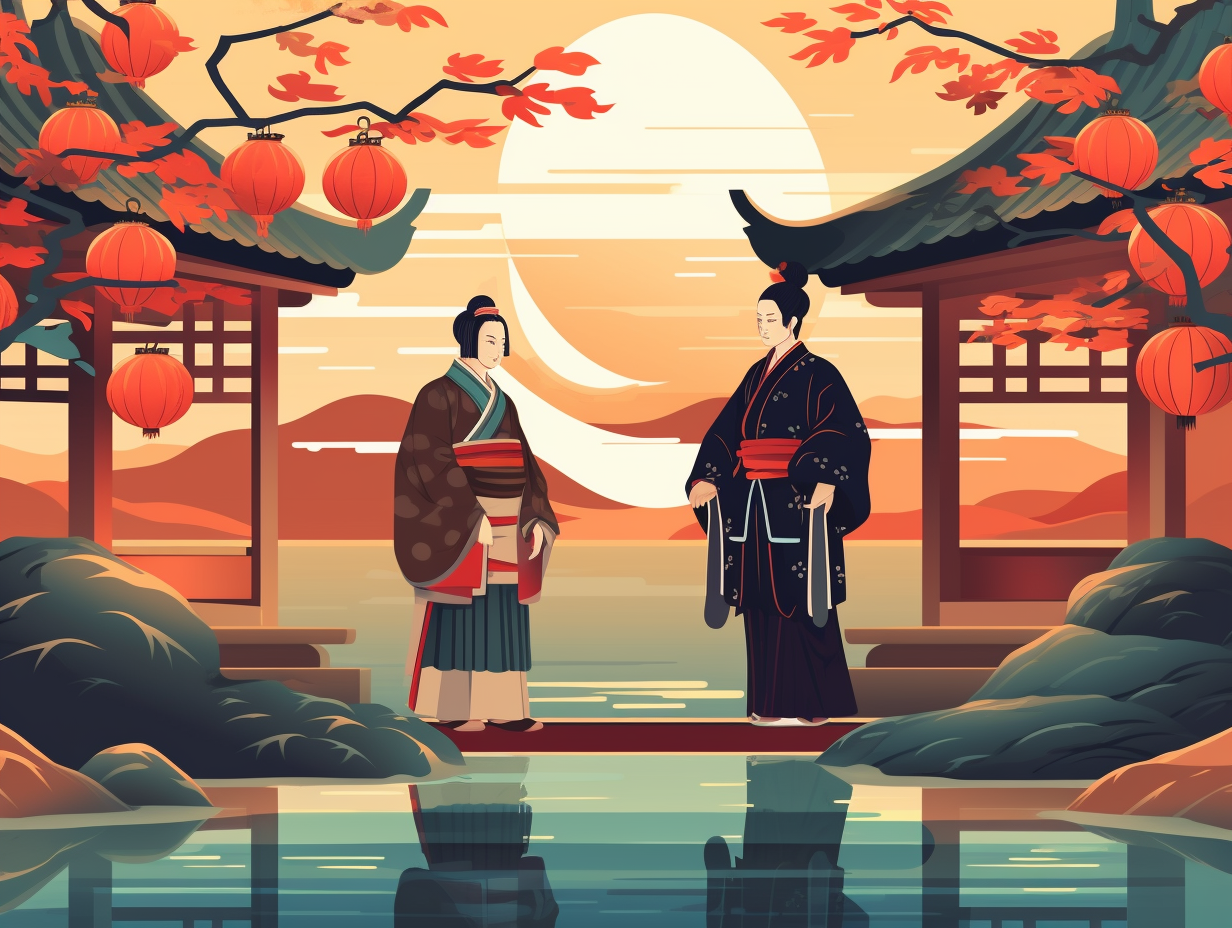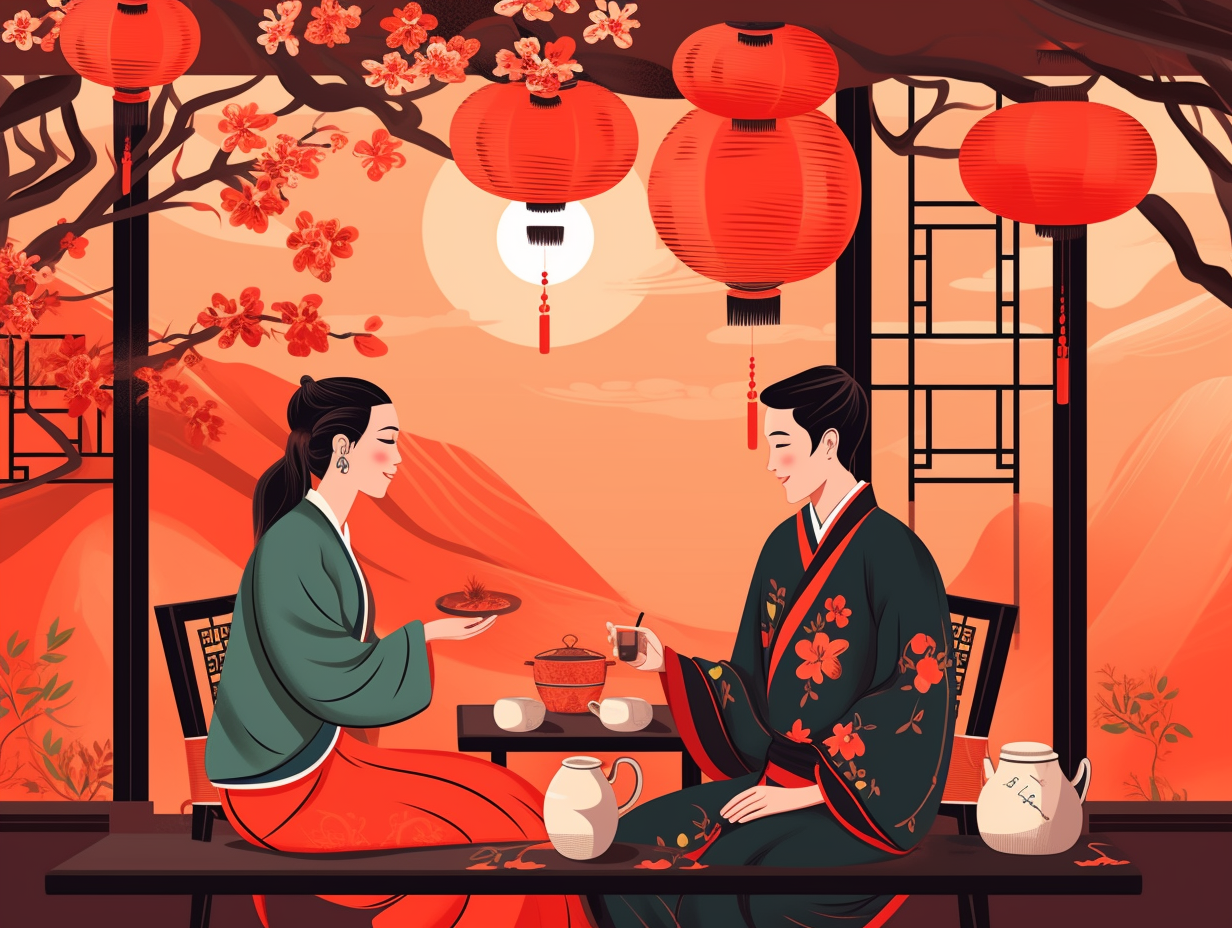Discover the Divine: Top 13 Fascinating and Fun Facts About Shintoism

1. Kami Everywhere!
Whoever said "the more, the merrier" surely had Japan in mind: for in Shintoism, everything—the merry mountains, the giggling lakes and the meandering rivers—is believed to possess kami, or sacred, mystical elements. The number isn't a solid eight million like it was once rumored, but these kami circle around in everything from living beings' spirits to souls of exceptional humans who've passed away.
Source => bbc.co.uk
2. Divine Island Chefs
Before Izanagi and Izanami stirred things up with their love for the culinary arts, they sure did know how to whip up the perfect island: Using the heavenly jeweled spear, Ame-no-nu-hoko, these skilled divine chefs stirred the sea below the floating bridge of heaven, Ame-no-ukihashi, and as salty water droplets fell from the tip of the spear, voilà! They created the first landmass of Japan, Onogoro-shima – a truly divine recipe that remains a key ingredient in Shintoism's origin story.
Source => en.wikipedia.org

Discover how the Kwakiutl people mastered the art of sea navigation, creating fashionable cedar-bark clothing and utilizing cedar-log dugout canoes for their daily needs. 🌊🛶👗
=> Fun Facts about Kwakiutl
3. Creation Couple
Talk about stirring things up: Izanami and Izanagi literally created the islands of Japan by using a jeweled spear to mix up the primordial ocean, then they coupled up and had eight kids who became the islands themselves.
Source => encyclopedia.com
4. VIP Torii Gates
Ever wondered if Shinto shrines have a VIP section with velvet ropes? Think again: Shintoism uses torii gates, which come in varying sizes, to mark the entrance to increasingly sacred areas around a shrine, with the outermost gate being the largest. Although bowing before passing beneath the gate is customary, don't mistake it for a cosmic GPS – it's all about transitioning to the sacred, not navigation!
Source => nippon.com

5. Spiritual Detergent
Shintoism is like a detergent for the soul, washing away spiritual grime and getting whites whiter than white: born pure and possessing a divine soul, Shinto followers can cleanse themselves from polluting impurities like sin or death-linked vibes through purifying rituals, keeping their purity brighter than your favorite pair of bleached jeans.
Source => bbc.co.uk
6. Intimate Shinto Weddings
Who needs champagne showers and electric slides when you've got purification and divine connections? Shinto weddings in Japan bring a whole new meaning to the term "intimate affair": These traditional ceremonies are small, family-only gatherings that involve purifying rituals, deity offerings, and a focus on the couple's lifelong love and happiness, sans bridal party or festive celebrations.
Source => learnjapanese123.com
7. Divine Cabaret Show
Cue the lights, folks, because even the ancient Japanese gods knew how to put on one heck of a cabaret show: In Shinto mythology, when the sun goddess Amaterasu went into a self-imposed exile, her fellow gods got their groove on with dance, music, and some artsy-fartsy props like a magical mirror and beads to lure her out of her cave, ultimately shining a light on the powerful combination of creativity, wisdom, and prayer to overcome life's darkest moments.
Source => naokoyogitakiguchi.medium.com
8. Odd Couple: Shintoism & Buddhism
Shintoism and Buddhism, the religious Odd Couple of Japan, have been locking chopsticks since the 6th century, blending harmoniously together like sushi and wasabi: This delightful merger, known as Shinbutsu-shūgō, results in many Japanese people practicing both religions, each retaining their distinct beliefs and practices while creating a beautiful tapestry of shared culture and tradition.
Source => stearthinktank.com
9. Furry Entourage
What do you get when you cross a lion, a dog, a fox, a cow, and a monkey? A Shinto shrine's furry entourage, of course: Shintoism features a variety of sacred animals, like the komainu, which are stone lion-dog statues that protect shrines, foxes as messengers for the harvest god Inari, cows linked to the god of scholars, Tenjinsama, and monkeys ensuring fertility and safe childbirth. The Japanese zodiac, eto, even tags along with 12 animals representing each year—including the Year of the Dog in 2018. However, these animals aren't all divine messengers, but they sure make for one wild congregation!
Source => matcha-jp.com

10. Holy-Canopy Trees
When trees go above and beyond tree school and reach "holy-canopy" status: Shintoism reveres ancient, large, and magnificent trees known as shinboku as sacred shrines for the kami (gods). These spiritually superlative trees radiate powerful divine energies, offering enriching experiences of ecotherapy and meditative bonding with nature.
Source => ies.bio
11. Art Fusion at Gion Festival
From Japan with love: The Gion Festival, Japan's very own sequel to Night at the Museum, features not only Shinto and Buddhism inspired art, but also artworks that draw from Taoism, Confucianism, Judaism, Christianity, Islam, and Greco-Roman mythology, highlighting Kyoto's ancient role as a melting pot of cultures and global influences.
Source => booksonasia.net
12. BYOK Shinto Parties
If Mother Nature had a party, Shintoism would be the charming guest bringing BYOK (Bring Your Own Kami): Shintoism is centered around the belief in kami, divine spirits found in all aspects of nature, and emphasizes living in harmony with the environment while connecting with these spirits through spiritual practices that purify body, mind, and soul. No iconic leaders or strict dogmas here – just a deep appreciation for the world around us.
Source => different-level.com
13. Splish Splash Shinto Baths
Splish, splash, Shinto's takin' a bath: In Shintoism, water plays a crucial role in purification rituals and the worship of Kami deities. Visitors to shrines often cleanse themselves at temizu pavilions or chozu-ya before approaching the gods, while sacred springs and river dips abound in a soggy spiritual quest for purity and reverence. Don't get too excited – this isn't your typical spa day, but rather a divine dunk into the realm of the Kami!
Source => en.japantravel.com







